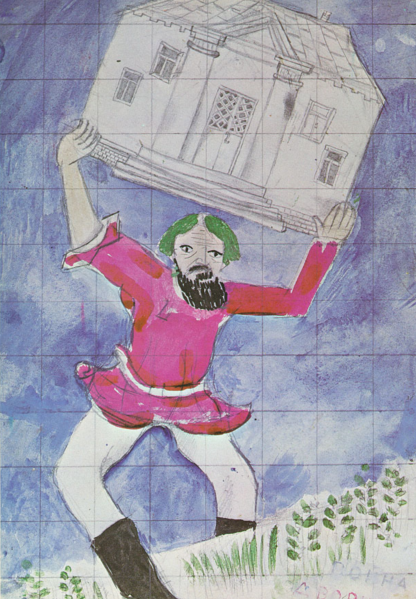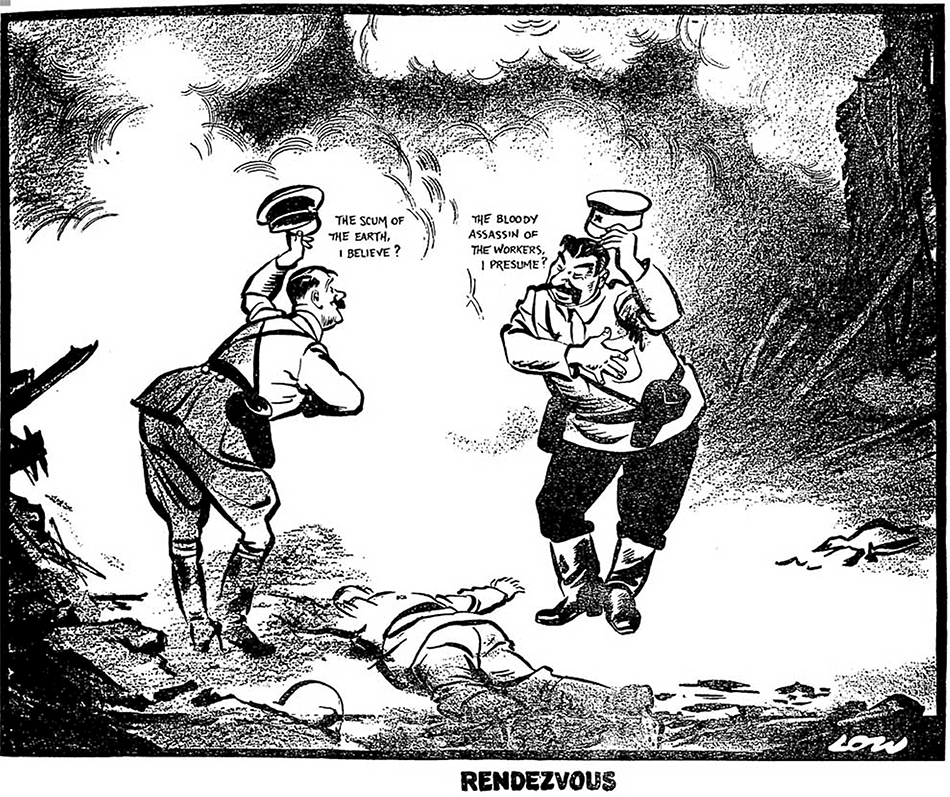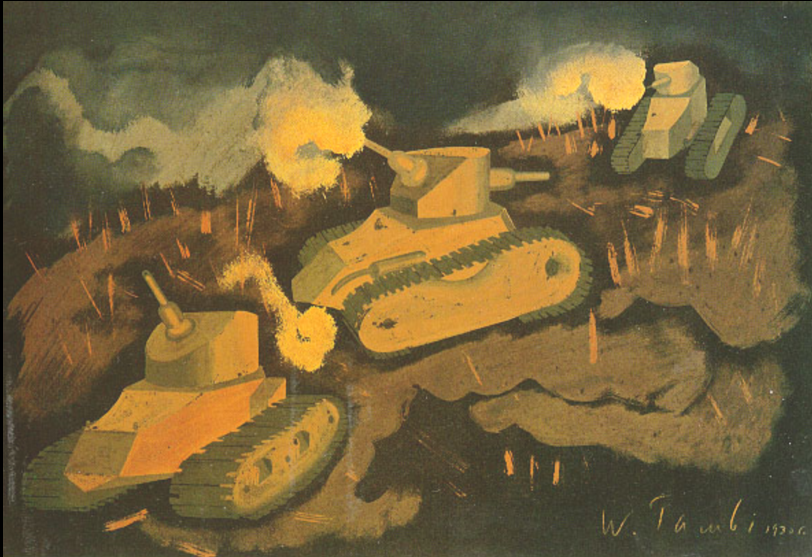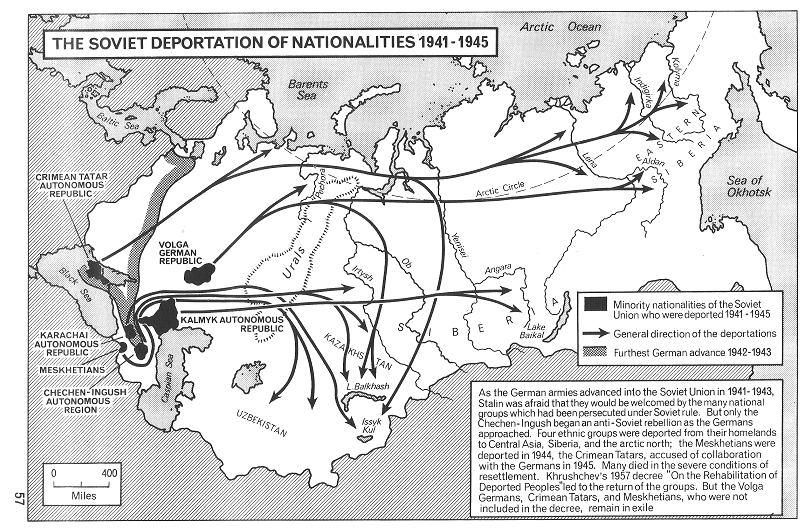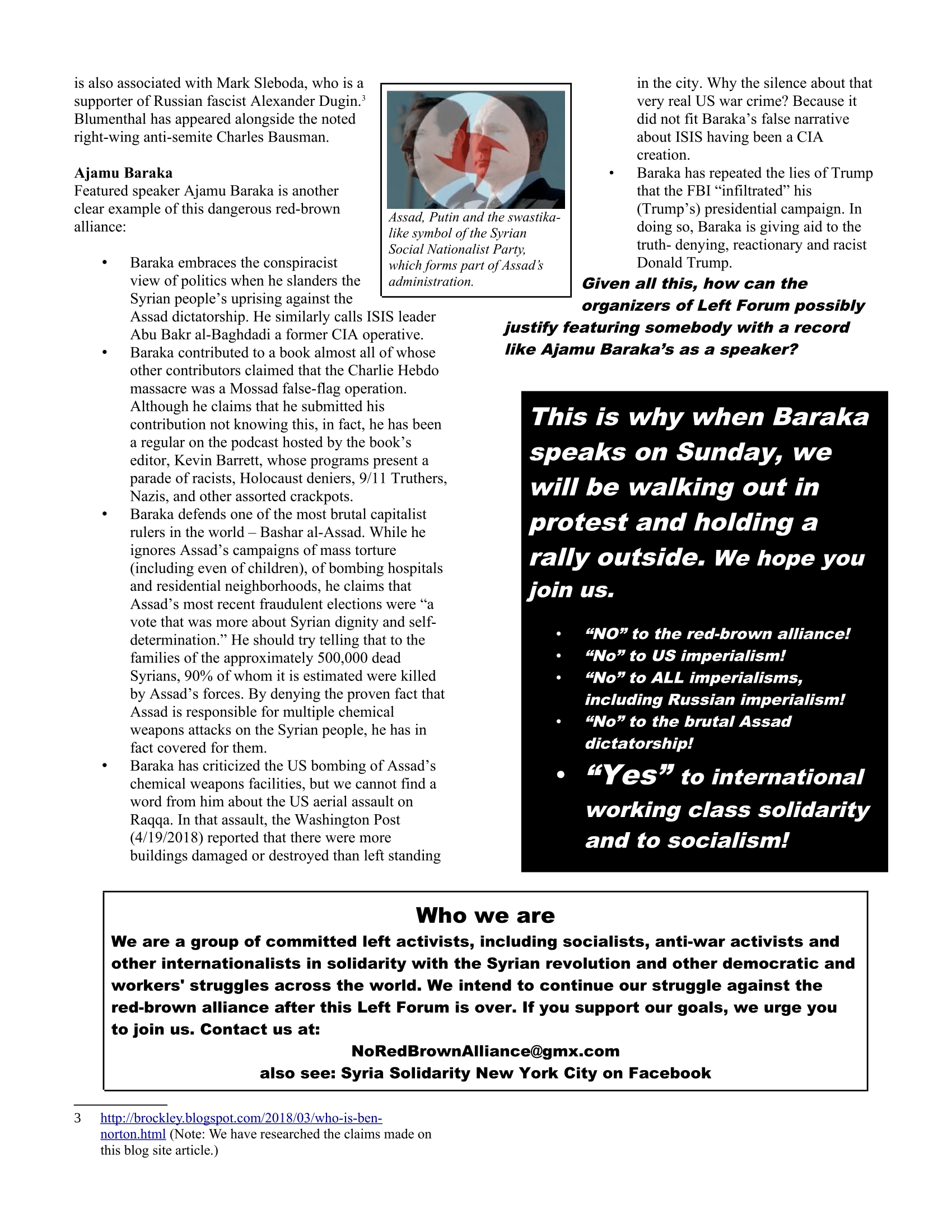Originally published on Perspectives on Anarchist Theory, 21 July 2022
The promise of historical and speculative fiction is the reconstruction of the past in the present, or of the present in the past, and the contemplation of what might have been, or of what might still be. As the psychoanalyst Sigmund Freud wrote, creative writers furnish “world[s] of [their] own” by “rearrang[ing] the things of [their] world in a new way which pleases [them].”[1] Between Dan La Botz’s novel Trotsky in Tijuana (2020) and Craig Mazin and Johan Renck’s HBO miniseries Chernobyl (2019), we find two fictionalized accounts bookending the tragic history of the Union of Soviet Socialist Republics (USSR), from the Bolshevik centralization of power following the anti-Tsarist Revolution of 1917 to what Rohini Hensman terms the “democratic anti-imperialist revolution” of 1991.
Trotsky in Tijuana is an intriguing and well-written book of alternate (or counter-) history, in which La Botz imagines Lev Davidovich Trotsky (1879–1940) surviving his assassination in Mexico City by the Spanish Soviet agent Ramón Mercader. In La Botz’s vision, the famed Ukraine-born Jewish Marxist then continues to organize against social-democratic reformism and Stalin’s Communist International through his organization, the Fourth International. This book combines neo-Trotskyist critique of Stalinism with libertarian-socialist themes as an imaginative “second world” to our own, illuminating divisions on the left among anarchists, Trots, and “tankies” (who support “anti-imperialist” dictators). Yet, as we shall see, despite the novel’s beauty and insights, Trotskyism appears to overpower anarchism in La Botz’s historical retelling.
For its part, the Chernobyl miniseries dramatizes the explosion that took place on April 26, 1986, within the core of the Vladimir I. Lenin Nuclear Power Plant, located near the cities of Pripyat and Chernobyl in northern Ukraine. Chernobyl lays bare the dangers of nuclear energy specifically and technological hubris more broadly, while implicitly critiquing Soviet State capitalism and, perhaps by extension, private forms of capitalism—like those we confront in the United States. Chernobyl shows how the combination of workplace hierarchy, high technology, hyper-masculinity, and the performance principle threatens our collective self-destruction.
On February 24, 2022, Russian military forces invaded Ukraine as part of a brutal campaign announced by President Vladimir Putin to supposedly “demilitarize and de-Nazify” the country. However, this “denazification” campaign in reality represents yet another instance of white Russians carrying out genocide. Having penetrated Ukraine’s northern border, the Russian army quickly overran the Chernobyl site, where, for over three weeks, the facility’s workers were forced by the occupiers to work nonstop. The radiation spike seen at Chernobyl at the start of the Russian invasion—a twenty-fold increase—can be explained by the churning of irradiated soils through the movement of military hardware.
On March 3 and 4, 2022, Russian shelling on the Zaporizhzhia Nuclear Power Plant in southeastern Ukraine—Europe’s largest nuclear plant—set an administrative building on fire. Fortunately, the site’s six reactors (better protected than their now-deactivated counterparts at Chernobyl) remained undamaged, and as of early March, local levels of radioactivity were normal. Even so, we should bear in mind the warning of Professor Kate Brown, author of Manual for Survival: A Chernobyl Guide to the Future (2019), that “any […] nuclear even[t]” cannot be “isolated within sovereign borders,” owing to the physics involved. In this light, although Russian forces withdrew from the Chernobyl region in early April, Putin’s threats of nuclear blackmail following the invasion remain unsettling.
In this article, I will review Trotsky in Tijuana and Chernobyl from an anti-authoritarian perspective by exploring some of the overlap with, and divergences from, anarchism in these artistic works. I will also present an overall critique of nuclear energy, to contrast with the ideological support Chernobyl’s screenwriter, Mazin, provides to the industry—regardless of the scope of the disaster he portrays.

Trotsky in Tijuana
In Trotsky in Tijuana, Natalia Ivanovna Sedova, Trotsky’s second wife, fatefully questions the man she knew as Frank Jacson’s choice to wear a heavy raincoat during a visit to their fortress-home in Coyoacán on August 20, 1940. However, in La Botz’s counternarrative, Sedova’s doubts do not go unheard. Historically, Mercader wore this same coat to cover up the ice ax he would use to fatally injure the exiled communist revolutionary, as the latter reviewed an essay with which his counterpart sought to distract him. Yet, in La Botz’s imagination, Ralph Bucek, a fictional US-American guard of the “Old Man,” enters his charge’s office and hits the Spaniard in the head with a baseball at the last moment, saving the day.
Rather than replay Trotsky’s murder—as John P. Davidson’s novel The Obedient Assassin (2014), Antonio Chavarrias’s film El Elegido (The Chosen, 2016), and the Russian TV miniseries on Trotsky (2017) do—La Botz’s book envisions the founder of the Red Army escaping this brush with death through exile to Baja California, where he continues to theorize about current events, especially World War II, and even find time for erotic love.
Not long after Trotsky, Sedova, and their retinue resettle in the so-called Cantú house in Tijuana, Trotsky’s own anarchistic secretary, Jan van Heijenoort, abandons Mexico for Europe, plotting a long-term mission to assassinate Stalin. La Botz imagines that Van’s plan dovetails with the “doctors’ plot” of 1953, when Soviet Jewish physicians had supposedly conspired with Western imperial powers to murder Stalin, his propagandist Andrei Zhdanov, and other party bosses. In retaliation for the discovery of this “plot,” Stalin ordered the arrests of hundreds of Soviet Jews and/or physicians, and planned to expand the Gulag to imprison more Jews, in a final homage to his “frenemy,” Adolf Hitler. Yet, just as a possible second Holocaust and nuclear war between the USSR and the West are threatened, La Botz’s depiction of Van’s assassination plot succeeds. The same day, the Soviet agent “Étienne” (Mark Zborowski)—who had murdered Trotsky and Sedova’s son, Lev Sedov, in Paris, and then boldly posed (in La Botz’s imagination) as Trotsky’s new secretary in Tijuana—kills Lev Davidovich by poisoning.[2]
While La Botz is sympathetic to his martyred subject, he is not uncritical toward the Bolshevik leader’s legacy. He surely does not shy away from depicting Trotsky’s narcissistic, delusional, and dogmatic tendencies. Rather, he insinuates the need for twenty-first-century updates to the brightest ideas of this “polymath,” who was “lost in time.” These ideas include class struggle, the united front, and the permanent revolution. Historically speaking, Trotsky adapted the last of these from the French anarchist Élisée Reclus, who asserted in 1899 that “[a]s long as iniquity endures, we, international anarcho-communists, will remain in a state of permanent revolution.”[3]
This dynamic only reinforces the anarchist hypothesis that Marxists aim to appropriate revolution for themselves and their bureaucratic franchises, rather than the liberation of the working classes and humanity—as Marx’s own expulsion of Mikhail Bakunin and James Guillaume from the First International in 1872, and Lenin and Trotsky’s crushing in 1921 of the Kronstadt Commune and of the peasant-anarchist Revolutionary Insurgent Army of Ukraine, prove. While the mutiny by Red sailors at Kronstadt demanded that the Russian Revolution advance without the dead weight of the Communist Party, the Revolutionary Insurgent Army was cofounded by the Ukrainian peasant guerrilla Nestor Makhno, who also organized with the Nabat (Tocsin) anarchist confederation after the fall of Tsar Nicholas I in 1917. Despite the Makhnovists’ proclamation of free soviets and their actions that arguably saved the Revolution through their fierce resistance to the reactionary White armies during the Civil War (1918–21), just as the Kronstadt sailors had previously served the cause at key points, forces loyal to Red Army commander Trotsky crushed both groups.
Notably, La Botz does not acknowledge that Lev Davidovich Bronstein adopted the surname Trotsky in 1898, after his jailer in Odessa. Psychoanalytically, this choice suggests identification with the aggressor, which is consistent with sociopolitical authoritarianism.[4] Arguably in this sense, there is a direct line from Lev’s adoption of his prison warden’s name to his own atrocities in the Revolution. Indeed, Trotsky in Tijuana’s coverage of the Russian Revolution conveys its author’s neo-Trotskyism. For instance, throughout the novel, the totality of the revolution is reduced to the Bolsheviks’ October 1917 seizure of power, with little to no mention of the “people’s epic” from February 1917, which in fact began the earthquake. This elision amounts to a minimization of the role played, specifically, by the proletarian women who lit the spark in Petrograd that overthrew the Romanov Tsars. La Botz even suggests that “revolution” emanated from Lenin’s persona, as though this were his superpower. Likewise, in a 2015 column in New Politics, the author writes that in both “February and October 1917,” the “Bolshevik[s] led the Russian working class to overthrow the Czarist autocracy.” The only problem with this claim is that all of the Bolshevik leaders were in exile during February 1917.[5]
In reality, the book glosses over its subject’s wickedness, in a move that functions to boost Trotsky’s radical credentials. Although La Botz acknowledges that the Bolsheviks “incorporated […] Tsarist officers” into the Red Army early on, the mass murder of the insurgent Kronstadt sailors—overseen by Trotsky in March 1921—is not mentioned until the second half of the book. At that point, La Botz describes the war commissar as merely “support[ing] the decision” to suppress the mutineers, rather than supervising the ex-Tsarist officer Mikhail Tukhachevsky’s use of overwhelming force toward this end.[6] Neither Makhno nor the Makhnovshchina is mentioned at all.
In short, while La Botz’s historical counternarrative champions direct action and critiques bureaucratic authoritarianism, the author’s affection for the “Old Man” somewhat clouds the novel’s treatment of the period between 1917 and 1921. A more anarchist approach might have portrayed Lev Davidovich as haunted by the counterrevolutionary brutality he oversaw and carried out during that time. Although La Botz’s condemnation of Stalinism is most apt—especially in light of “tankie” support for Putin’s war crimes in Syria and Ukraine—and despite the author’s good-natured satire of the titular character, the story neither adequately questions the role of “revolutionary” authority nor proclaims that it is the workers and peasants, not the party, who drive revolutionary change.

“Control room of the Chernobyl Nuclear Power Plant,” Carl A. Willis (Creative Commons Attribution 3.0)
What Happened at Chernobyl in 1986?
Like Marx, Lenin, and Stalin, Trotsky was an enthusiast of bourgeois principles of management, political centralism, and the domination of nature. When crystallized in high-risk technologies such as nuclear energy, it is unsurprising that such Promethean social ideologies, imaginaries, and institutional structures would result in disasters like the one experienced at the Vladimir I. Lenin Nuclear Power Plant, featured in Chernobyl.[7]
The basic idea of nuclear fission is this: uranium, after having been mined and enriched, is subjected to neutron bombardment in a nuclear plant’s reactor core. This leads to the fission, or splitting, of the nuclei of uranium, and the resulting production of intense heat, or radiation. This radiation is then combined with coolant to produce high-pressure steam, which in turn moves turbines, thus producing electricity.[8] The RBMK-type reactor used at Chernobyl, as in many other Soviet nuclear power plants, shared this basic function with the Western light-water reactors (LWRs) presently in use. One of the major differences between the two designs, however, is that RBMK reactors lacked the steel-reinforced containment shields surrounding the core found in LWRs.
On April 26, 1986, a safety test was scheduled to be performed within Chernobyl’s reactor number 4 during the day shift. However, to accommodate the needs of Soviet state capitalism, the test was delayed by ten hours, leaving it to the less-experienced night shift. As part of this experiment, the plant’s crew deactivated the automatic safety and warning systems, including the emergency cooling system. They also removed most of the control rods from the reactor core, lowering energy output far below normal. Accordingly, without adequate power to pump water into the reactor to either remove excess heat or produce electricity, the core became unstable.[9]
At this point, Chernobyl depicts several of the plant’s workers, all of whom present as cisgender men, as protesting the idea of proceeding with the safety test. Nevertheless, reflecting toxic masculinity and the phenomenon of abusive supervision, Anatoli Dyatlov, the plant’s chief engineer, orders the experiment to proceed. Linking megalomania and the performance principle (or the compulsion to keep the capitalist machine going) with the masculine derogation of femininity, Dyatlov bullies his subordinates, Aleksandr Akimov and Leonid Toptunov, into obedience. He does so by threatening their jobs, and specifically by associating Toptunov with his mother, due to his youthful and androgynous appearance.[10] Then, when the test goes haywire, Akimov engages the emergency shutdown system known as AZ-5, thus introducing graphite-tipped rods into the reactor core. This unexpectedly increases reactivity, leading to a chain reaction that causes a critical buildup of steam, a partial meltdown, and a core explosion that would irradiate much of Ukraine, Belarus, Russia, and the rest of Europe.
Chernobyl tells the dramatic tale of this experiment gone awry, together with some of the responses taken by the state, individuals, and collectives to this unprecedented catastrophe. Mazin and Renck portray desperate scenes of exploited labor, as firefighters and helicopter pilots struggle to douse the numerous fires set off by the explosion, miners are forced at gunpoint to build a tunnel beneath the reactor to accommodate a heat exchanger, and human “bio-robots” are used to clear radioactive debris from the facility’s roof. Notoriously, the firefighters who initially responded were neither warned of the risks of exposure, nor provided any sort of protective equipment. As a result, many of these working-class heroes died of acute radiation syndrome. Still, this grisly story foregrounds the state capitalist domination of (cis) men: with the exceptions of female nurses attending to irradiated patients and the fictional Soviet physicist Uma Khomyuk, who is an amalgam of the scientists investigating the incident, women are mostly absent from Chernobyl.
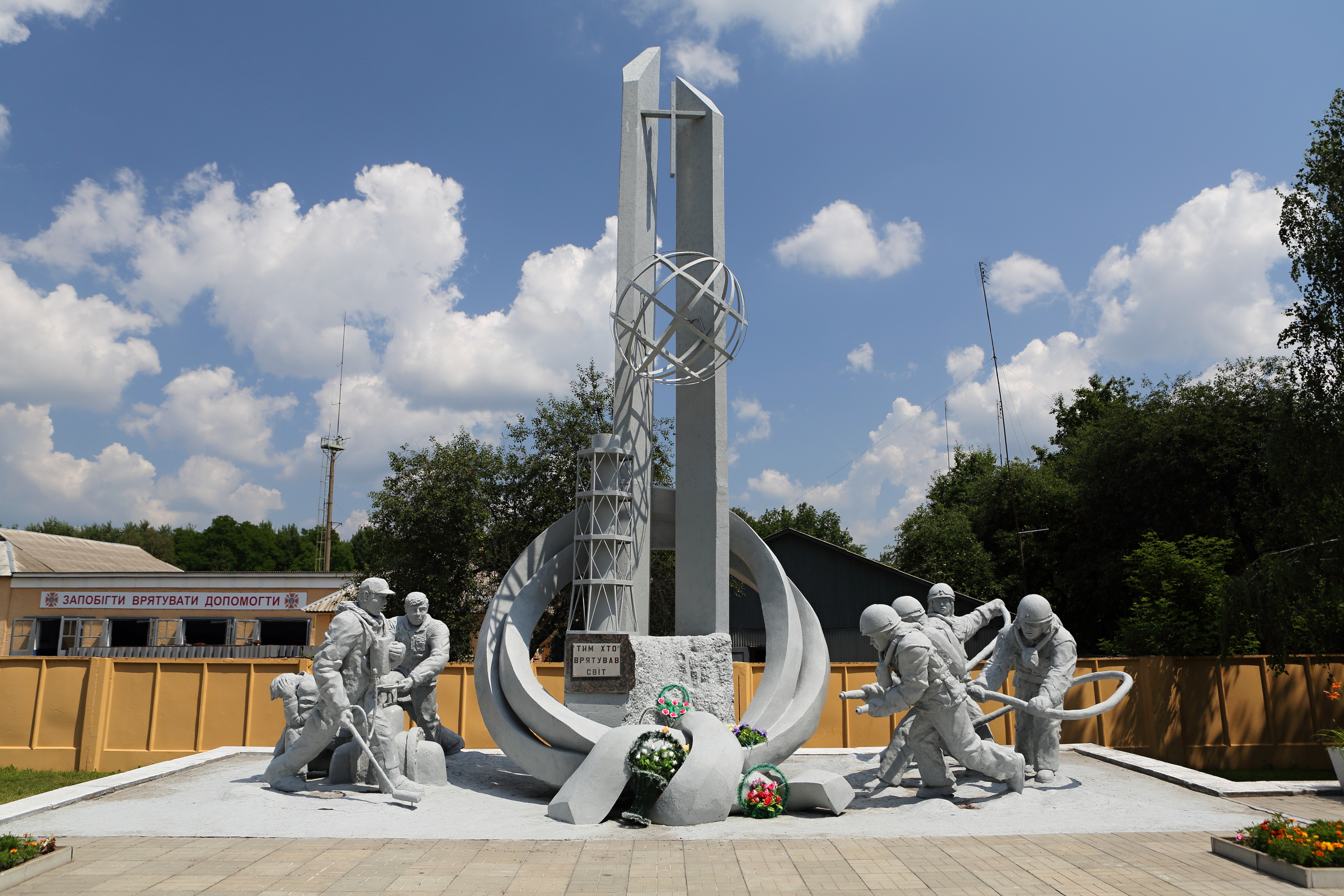
“Monument to Those Who Saved the World,” photographed by (Creative Commons Attribution 3.0)
Trotsky and Chernobyl’s Critiques of Party-Boss Despotism
In terms of understanding the destruction of the Russian Revolution, the Chernobyl nuclear disaster, and the subsequent collapse of the Soviet Union, we might benefit from contemplating the close relationship between Leninism and Stalinism. In Trotsky in Tijuana, La Botz includes Trotsky’s insightful prediction that the Bolshevik Party would come to be dominated by Lenin, simply due to the pyramidal structure he proposed for it. The author portrays Stalin, as Lenin’s successor, being haunted by Trotsky’s accusation from 1927 that he was the “gravedigger of the Revolution!” Still, he entertains the idea that it was only Grigory “Zinoviev’s military Bolshevism,” a “Bolshevism characterized by authoritarianism and intolerance,” that had “created Stalinism”[11]—thus letting Lenin and Trotsky off the hook.
Even so, almost approaching Paul Mattick’s left-communist critique, La Botz explicitly acknowledges how wrong Trotsky was to consider the USSR a “workers’ state” of any kind.[12] As outlined in The Revolution Betrayed (1937) and other writings, the exiled theorist’s self-serving position about Stalin’s USSR being a “degenerated workers’ state” is perhaps understandable, but it is nonetheless delusional. Indeed, Trotsky’s own responsibility for the suppression of the Kronstadt Commune and the Makhnovist peasant-anarchist movement in Ukraine paved the way for his rival’s takeover. As the Bolshevik autocracy eliminated the most radical elements among workers, peasants, and fighters, it sealed the fate of the Revolution: namely, to give rise to a Communist hell.[13]
Along these lines, Chernobyl can be seen as a visual exploration of the horrors of bureaucracy, state capitalism, and high technology. To protect the reputation and power of the Communist Party of the Soviet Union (CPSU), the Politburo executives covered up and downplayed the news from Chernobyl from the start. Reflecting the lack of freedom of the press, free speech, or freedom of movement evident in the Soviet Union, authorities forced Western correspondents to remain in Moscow in the aftermath of the accident. Meanwhile, the KGB filtered information flows from the disaster site. In reality, the “two million residents of Kyiv,” located eighty miles from the plant, “were not informed despite the fallout danger, and the world learned of the disaster only after heightened radiation was detected in Sweden.” Mikhail Gorbachev, the CPSU’s last general secretary, did not publicly acknowledge the reality of the situation until May 14, well over two weeks after the explosion. In fact, despite Ukrainian appeals to the contrary, Gorbachev ordered the 1986 May Day march to proceed in Kyiv, so as to feign that the explosion posed no health risk to the public—this, despite the fact that the winds were then carrying fallout toward the city.[14]
The injustice of the situation is accentuated by Con O’Neill’s almost mafioso performance as Viktor Bryukhanov, Chernobyl’s manager. Shielded from the risks faced by workers, Bryukhanov keeps a lid on vital information as he sacrifices first responders. Echoing not only tsarist times, when St. Petersburg was constructed on wetlands using the mass conscription of serf labor, but also Stalin’s deportations, forcible collectivization, and the “Great Patriotic War” against the Germans, the CPSU mobilized over six hundred thousand so-called “liquidators” to deal with the fallout from Chernobyl. A 2005 report from the Irish Times finds that since 1986, twenty-five thousand liquidators had died, and that seventy-thousand had been permanently disabled.
While it set the stage for the collapse of the Soviet Union, as Gorbachev later admitted, the Chernobyl nuclear disaster caused 350,000 people to be permanently resettled, and its radioactive emissions have coincided with a regional increase in childhood thyroid cancer rates. While Mazin conveys a death toll of between four thousand and ninety-three thousand owing to the accident, Kate Brown estimates that “[b]etween 35,000 and 150,000 people died from cancers, heart problems, [and] autoimmune disorders” resulting from the disaster. Plus, as the recent movements of Russian units have reminded us, the soils surrounding Chernobyl remain highly irradiated. Ominously, less than a month into the all-out war, forest fires began to erupt, sending airborne radiation levels skyrocketing.
Chernobyl, Eros, and Anarchism
Perhaps surprisingly for an HBO series, Chernobyl features themes sympathetic to queerness, anarchism, and their intersections. For instance, as Akimov confronts the moral distress of carrying out Dyatlov’s unreasonable orders to proceed with the safety test, he gently whispers to Toptunov: “I’m with you.” We can draw a parallel here to Herman Melville’s Moby Dick (1851), which proposes homoerotic union among the crew of the Pequod against the deranged Captain Ahab, who is leading them toward a watery grave. Tragically, in both cases, the crew do ultimately perish, in an allegory of the self-destructive tendencies of capitalism, the domination of nature, and toxic masculinity. In parallel, the miners from the Donbas region who are conscripted to build a tunnel under the stricken plant are shown as especially defiant to the authorities, in a way that may recall the Ukrainian peasant-anarchist movement led by Makhno. Though the miners agree to the CPSU’s terms, Mazin and Renck depict them as doing so proudly, in terms of laboring to save humanity. Furthermore, they are shown performing their communal work in the nude, and this verbal image suggests free love as a means to dissolving hierarchy, or what the late researcher Christopher Chitty refers to as “sexual anarchy.”[15]
On the one hand, Chernobyl celebrates the heroic labor and mutual aid performed during and after the disaster by workers, including engineers, first responders, nurses, miners, and scientists. On the other, it portrays party bosses, from Bryukhanov to Gorbachev, as parasites and autocrats. With this dichotomy in mind, in his review for the New York Times, Mike Hale complains about the miniseries’ “one-dimensional heroes and villains.” Perhaps Mazin and Renck exaggerate a bit, but then again, the bureaucratic authoritarianism exhibited by Dyatlov and his superiors follows from the Soviet context, established by “Red hangmen.”[16] After all, the Soviet political system was based on a combination of the Tsarist “administrative utopia” and the “revolutionary statism” preached by Marx and Lenin.[17] Though he ended up killing Trotsky, Stalin “copied and far surpassed” his rival’s plan for the militarization of labor.[18]
In this sense, despite Chernobyl’s production by HBO, the visual narrative may well be influenced by Mazin’s own apparent solidarity with the struggle against class society. In his review on Red Flag (Australia) of the miniseries as an “anti-capitalist nuclear horror story,” Daniel Taylor observes that “the disaster we’re seeing is transpiring in, and largely a product of, a bureaucratic, managerial society divided into rulers and ruled, bosses and workers.”[19] Therefore, “strip away the Stalinist veneer and it is easy to recognise the system we have today: a managerial society run by bosses and bureaucrats who lie and kill to maintain their social dominance, and who threaten the whole world as long as they remain in power.” Taylor is right, but let us radicalize the implications beyond the nostalgia he expresses for Lenin and Trotsky. By focusing on the intersection of the exploitation of labor and ecological disaster, Mazin may be conveying implicit and/or unconscious sympathies with green syndicalism and social ecology, beyond democratic concerns about political dictatorship.
In parallel, we can draw lines from Trotsky and his Stalinist assassin Étienne, in La Botz’s presentation, to Dyatlov. Both Trotsky and Étienne are portrayed as automatons incapable of friendship, who typically view others only as tools, to be treated as either subordinates or superiors within a military hierarchy.[20] Such depictions, when juxtaposed with Mazin and Renck’s illustration of Dyatlov’s megalomania, communicate the continuities between Marxism-Leninism and bourgeois society—thus questioning what progress the Russian Revolution really brought. Indeed, in a chilling echo from the past, the blatant lie perpetrated by Trotsky and Lenin that the Kronstadt revolutionaries were led by tsarist officers—which subsequently inspired Stalin during his show trials—is now being reproduced by Putin’s regime, when it claims absurdly that Ukrainians are neo-Nazis.
Conclusion
Proponents of nuclear energy are often quick to dismiss the Chernobyl disaster as an aberration that reflects the flaws of both the reactor’s design and the Soviet autocracy, rather than any problems with nuclear fission as such. While the reactors in use today may be safer than the earlier Soviet designs, the 2011 disaster at the Fukushima Daiichi Nuclear Power Plant in Japan, provoked by a tsunami, still tells us that the lessons of Chernobyl have been neither learned nor applied. Moreover, besides the immediate safety issues owing to the risk of core meltdown, most nuclear fission plants in operation today share Chernobyl’s problems of radioactive waste disposal, dependence upon mining, and proliferation of materials usable in a nuclear weapon.[21] Much of this would also be true for the much-hyped hypothetical form of energy production known as nuclear fusion. Like the region surrounding Chernobyl, Diné (Navajo) lands and water-sources in the southwestern United States have been made into sacrifice zones for uranium mining concessions, resulting in radiation sickness and unusually high cancer rates among the Diné. Moreover, it is clear that nuclear energy has no role to play in averting catastrophic climate change.
Such critical thoughts, taken together with reflections on Mazin and Renck’s miniseries, may reveal the systemic nature of our predicament, linking Chernobyl with the Hiroshima and Nagasaki bombings, the Fukushima disaster, global warming, the current war by Russia on Ukraine, and ongoing nuclear brinkmanship. Both Chernobyl and Trotsky in Tijuana are cautionary tales and appeals to reason. While the former highlights “the dangers posed by Stalinism as a uniquely bureaucratic system of social organization,” the latter serves as a call for a united front among “all of us on the left who oppos[e] both Hitler and Stalin,” plus their contemporary followers.[22] While La Botz may not be as critical of Trotsky’s authoritarianism as I might like, his counter-history does recognize the importance of anarchism within revolutionary struggle. Looking to the future, the same mechanisms of social hierarchy, aggressive hyper-masculinity, and adherence to the performance principle that have driven catastrophes like Chernobyl and Russia’s war on Ukraine could be opposed and perhaps overcome by autonomous class struggle; internationalist, anti-militarist, and feminist resistance; and a global transition to wind, water, and solar energy.
Notes
[1] Sigmund Freud, “Creative Writers and Daydreaming,” Collected Papers, vol. 4, trans. Joan Riviere et al., ed. Ernest Jones (New York: Basic Books, 1953), 421.
[2] Dan La Botz, Trotsky in Tijuana (St. Petersburg, FL: Serge Books / BookLocker, 2020), 82–85, 91–92, 185–91, 422–50.
[3] Ibid., 24, 62, 196–69, 242–44, 305, 324, 328–29, 347.
[4] Sigmund Freud, Three Essays on the Theory of Sexuality, trans. Ulrike Kistner (London: Verso, 2016), 71–72.
[5] Ibid., 66, 308; Voline, The Unknown Revolution (Montreal: Black Rose Books, 1975), 136–37.
[6] La Botz, Trotsky in Tijuana, 57, 297.
[7] Irvin Sam Schonfeld and Chu-Hsiang Chang, Occupational Health Psychology: Work, Stress, and Health (New York: Springer, 2017), 9; Richard Stites, Revolutionary Dreams: Utopian Vision and Experimental Life in the Russian Revolution (Oxford: Oxford University Press, 1989), 50–52; John P. Clark, The Impossible Community: Realizing Communitarian Anarchism. New York: Bloomsbury, 2013), 3.
[8] G. Tyler Miller, Living in the Environment: Principles, Connections, and Solutions, 12th ed. (Belmont, CA: Wadsworth / Thomson Learning, 2002), 345–46.
[9] Ibid., 350.
[10] Schonfeld and Chang, Occupational Health Psychology, 206–7; Jessica Benjamin, The Bonds of Love: Psychoanalysis, Feminism, and the Problem of Domination (New York: Pantheon, 1988).
[11] La Botz, Trotsky in Tijuana, 20, 289, 311.
[12] Paul Mattick, “Bolshevism and Stalinism,” in Bloodstained: One Hundred Years of Leninist Counterrevolution, eds. Friends of Aron Baron (Chico, CA: AK Press, 2017), 259–72.
[13] Stites, Revolutionary Dreams, 171–72.
[14] Serhii Plokhy, The Gates of Europe: A History of Ukraine (New York: Basic Books, 2015), 310–11.
[15] Christopher Chitty, Sexual Hegemony: Statecraft, Sodomy, and Capital in the Rise of the World System (Durham, NC: Duke University Press, 2020). See the discussion on group marriage in Friedrich Engels’s The Origin of the Family, Private Property, and the State (1884).
[16] Alexandre Skirda, Nestor Makhno: Anarchy’s Cossack (Oakland: AK Press, 2004), 389.
[17] Stites, Revolutionary Dreams, 19.
[18] Mattick, “Bolshevism and Stalinism,” 259–60; Stites, Revolutionary Dreams, 242.
[19] Daniel Taylor, “Chernobyl: an anti-capitalist nuclear horror story,” RedFlag, June, 9, 2019. Available at: https://redflag.org.au/node/6814.
[20] La Botz, Trotsky in Tijuana, 384.
[21] Miller, Living in the Environment, 349.
[22] La Botz, Trotsky in Tijuana, 317.

